Insect Friendly Plants and Hostile Spiders go Hand in Hand !
Hello lovely Hiveans !
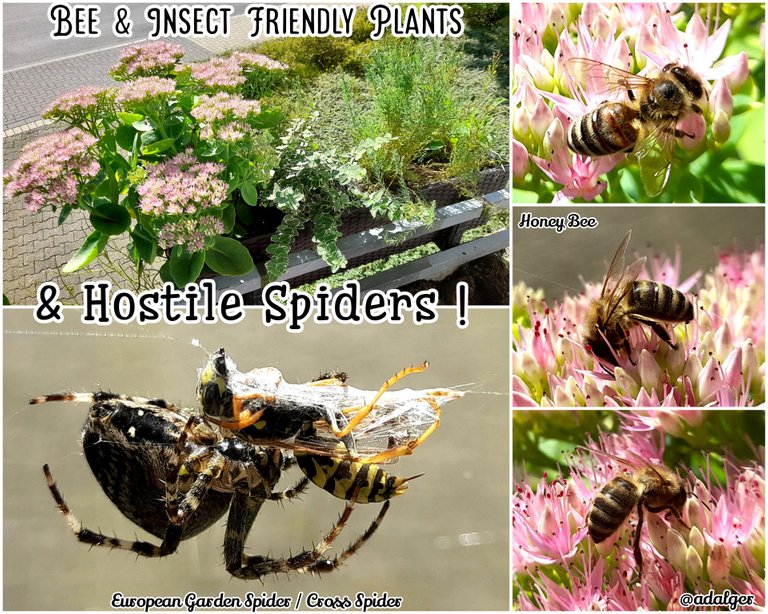
About 4 months ago, we decided to plant a lot of Bee and Insect Friendly Plants on our balcony. Therefore we choose 6 different plants to use, which are the Goldsturm (Rudbeckia sullivantii), Common Yarrow (Achillea Millefolium), Bulley's Primrose (Primula x Bullesiana), Stonecrop (Sedum Spectabile), Blue Flax (Linum Perenne) and the Purple Coneflower (Echinacea Purpurea). They all grew a lot during this time, we lost 1 of them and had to save 2 others, but one of these plants flourishes especially good, without any problems, and now even attracts bees like no other of our balcony plants, the Stonecrop (Sedum Spectabile).
The Bee-Friendly Stonecrop (Sedum Spectabile)
This one is actually quite easy to handle, as it can be planted throughout the whole year, is winter-hardy and withstands huge temperature variations, only needs relative low amounts of water and tolerates a wide range between low to high amount of direct sun irradiation. The Stonecrop can get as high as 50 cm and gets quite bushy over time. Probably we have to rearrange our plants completely in the beginning of the coming year. It also features really nice and beautiful dark pink flowers from September on ^^ .. As I mentioned before, this plant really attracts bees. Thus I was able to take some really nice pictures of the visitors too. On our luckiest day we found even 6 bees simultaneous sitting on one of our 2 little balcony bushes .. really cool 🌸🌺

Also the collage shows my best bee pictures, I also like to show them once in a higher resolved fashion. We were really happy to attract so many bees to our humble balcony, but if you pay attention to the last picture of the 3 that I show here, you can see some spider web strings, which will bring me to the next part of this post .. SPIDERS 😱
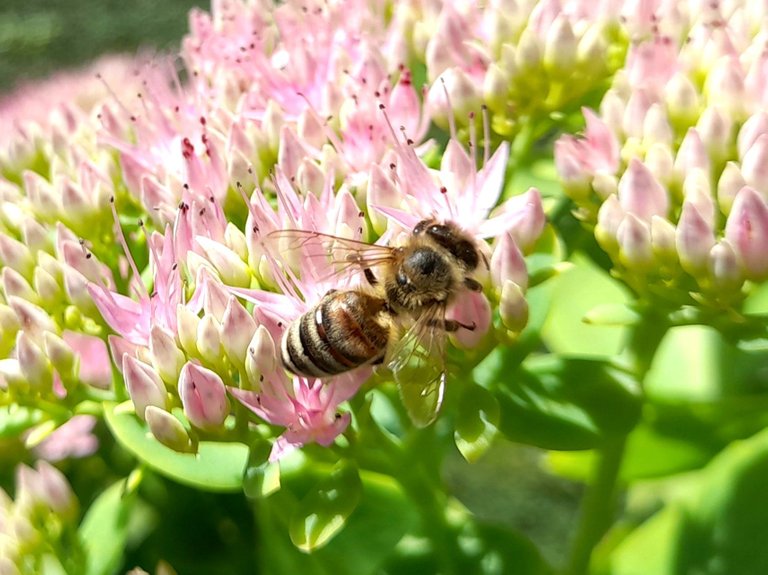
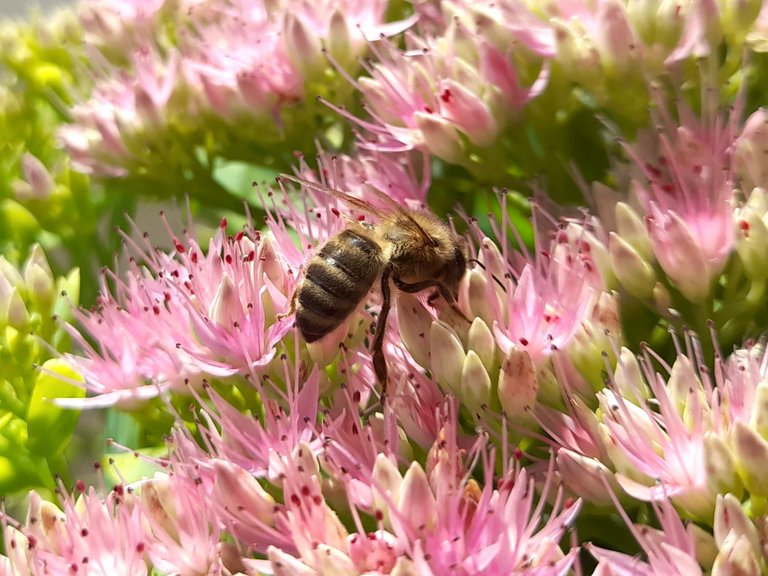

The Bee-Eating European Garden Spider (Araneus Diadematus)
About a month ago we noticed that we have a visitor to our flower pots, a Cross Spider, or more commonly called the European Garden Spider (Araneus Diadematus). These are very common here in Germany and the area where I am living and can be found everywhere throughout Europe and North America. These spider species usually does not grow to big and all specimens that I found so far are approximately 2 to 3 cm large at max, but they are known to be poisonous. Usually they are only a threat for its insect prey. Humans just get some skin irradiation, but if allergic it can lead to circulatory and breathing problems. So you better don't mock them 😜
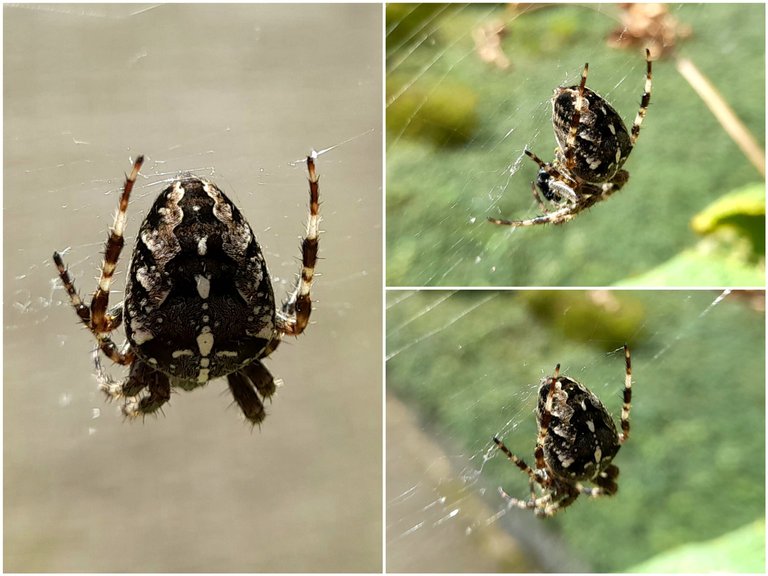
During the last month we figured that the little Cross Spider grew bigger and bigger and just recently it was building a second web so that it has one at each side of the balcony box that I showed above. In the beginning we though that it may not stay for long but it seems that it made itself quite comfortable 😁 .. I am not a big fan of having spiders around, but my son insisted to leave it so that he would be able to watch and study its behavior. Of course, I could not withstand the urge to support the little scientist in him and let the spider be. Today we were so lucky to finally witness the spider catching its pray in real time 😲
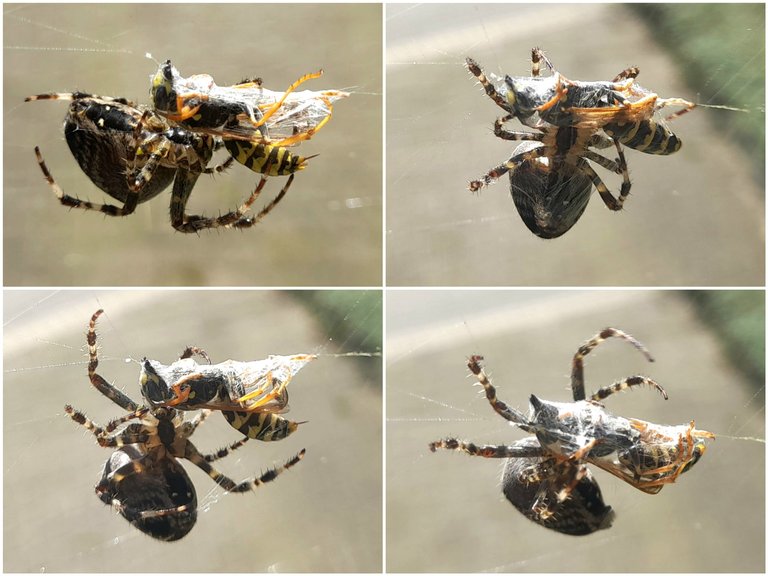
You may have assumed that it was a bee that was captured, but actually it was not, it was a wasp. I was not fast enough to capture the initial moment when the wasp hit the web, but I can tell you that the Cross Spider was really super fast on its way to reach it as quickly as possible to inject its poison into the fresh prey. The wasp stopped quite quickly with its movements and allowed the spider to wrap her into its web trap. It was super interesting to witness this moment and I am sure that my son learned a lot from this rather spectacular show. Still, I am very lucky that spiders are just so small compared to us humans 😁 .. It would be my personal nightmare to have them as large as 2 to 3 meters 😨
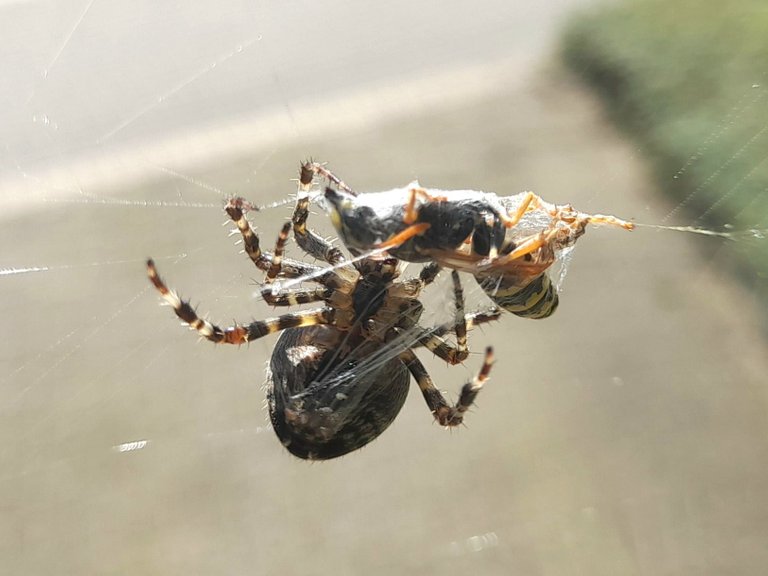
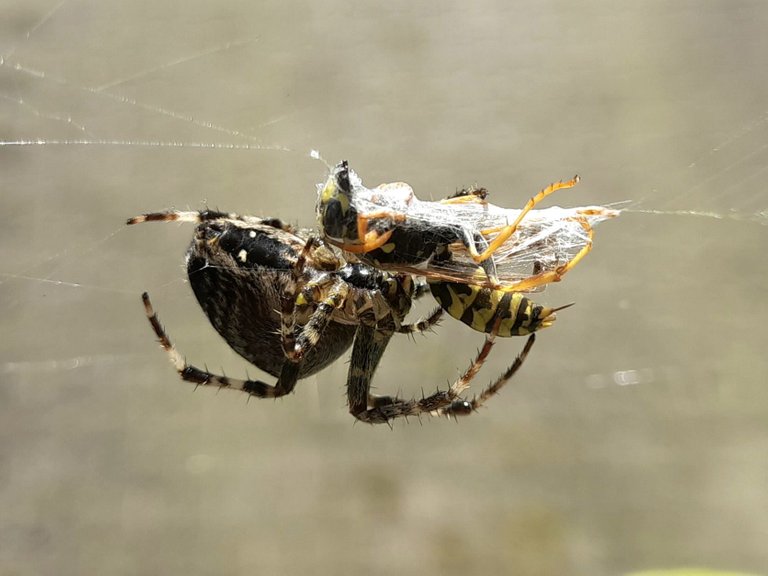
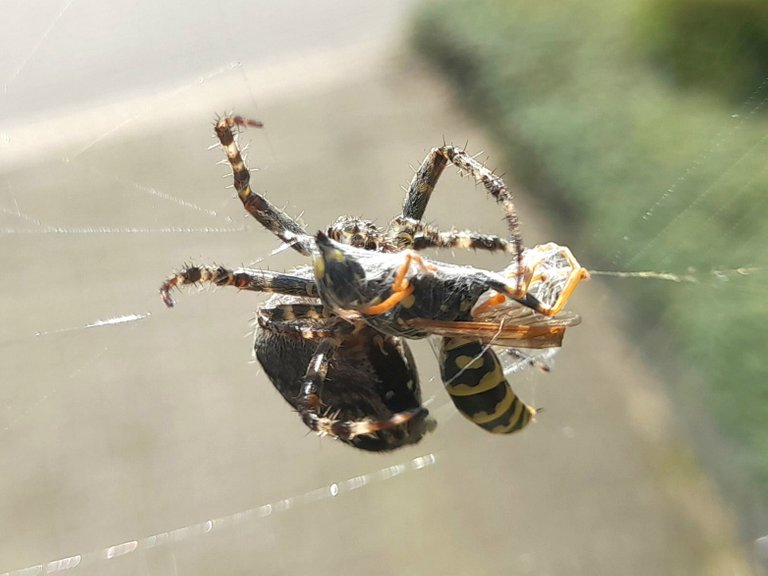
Thank You !
I hope you enjoyed my little review of which of the bee friendly plants of our balcony was the most successful one in attracting bees in the end. In addition, we got nicely tough by nature that bee- and insect-friendliness always goes hand in hand with the appearance of species that are hostile to them, such as spiders ^^ .. For me and my son this was a highly educative and interesting scenery to witness and we had quite a lot of fun observing it, also it may appear quit macabre to watch a killer do its work 🙃 .. Thank you for reading through it and perhaps for finding it as interesting as we did 👋
All pictures were taken by myself, ©@adalger, with a Samsung Mobile Phone in September 2021.
 Clickable Banner that redirects to the Community ^^
Clickable Banner that redirects to the Community ^^ Clickable Banner that redirects to the Community ^^
Clickable Banner that redirects to the Community ^^
Clickable Banner that redirects to the DNA Discord server, the home of the nature communities on Hive ^^
 Clickable Banner that redirects to the Terminal Discord server ^^
Clickable Banner that redirects to the Terminal Discord server ^^Support @dna.org  |
|---|
If you want to know more about me, just look up my Introduceyourself post or follow my blog ^^
Learn more about @adalger here !

I have that Sedum on my balcony too (yours is much bigger though) and today I saw some wasps flying around it. Such a cool plant to grow and attract insects!
Oh yes, it's a really nice plant @ewkaw 🪴 .. In the beginning we were a bit sceptical if it makes a good balcony plant, but we were proven that it is a great one .. its just a few months old, so it seems that our conditions here are perfect for the plant 😁 .. it is one of my favorites now and indeed a bee-friendly one .. even a wasp friendly 🤣 .. thx for stopping by, if you ever have the chance and time, leave me a picture of your plant here. It would be nice to see a comparison 😉
I am sure you will enjoy it for many hears to come. It handles hot sun and freezing cold winters very well.
My one just started to bloom so will have to wait for all the flowers to open.
Hehe, I hope it will last for a very long time ^^ .. I wish you the very best for your plant to get big and bushy too ! .. Next year at this time we will both have some admirable beauties around ^^
Ohhh that spider is so cool...
Hehe, compared to the many other Cross Spiders that I spotted around here this one has one of the biggest bodies of all .. probably its a spider paradise here on the balcony, with lot of visiting Insects that are unaware of the threat .. we need a name for the spider and consider it as a pet 🤣
🔥🔥🔥🔥👍
😁
Excellent post my friend @adalger, it is very gratifying to see when the plants in our homes become good microecosystems. curious to read that your idea was to attract bees (indeed it worked), but someone else always comes to the party, in that case the spider hehehehe. cheers adalger!
Thank you very much @abneagro ^^ .. I didn't calculate the spider in, but it was a really cool surprise ! .. I am eager to observe how this will work out in the future and if the spider can maintain its place in-between the balcony plants .. I fear that the next storm may drive her away, hmm
The spider can stay on the balcony, but in case of weather changes, it will probably move within the same area to a safer place, if it has a reliable food source, it will most likely not move from that place. We'll see what future that spider will have hehe, greetings @adalger.
Hehe, food will be around ^^ .. We will observe the spider continuously and if we see something amazing in the future I will let you know 😉